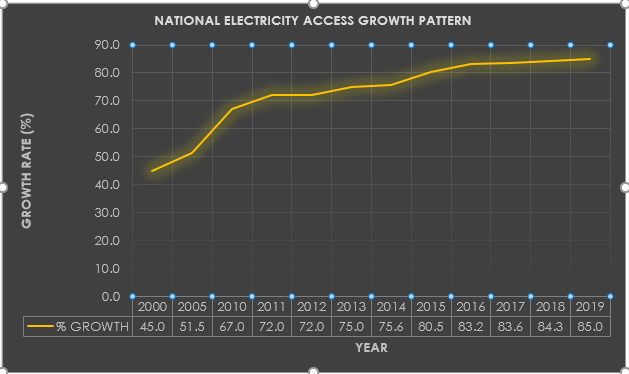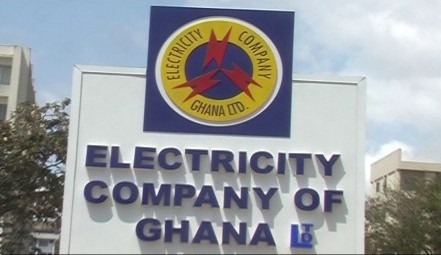- Grew by more almost 3% for more than a decade
- But growth slows below 1% for past three years
- To achieve 100% access by 2025, 3% growth rate required
The rate of growth when it comes to access to electricity has seen a significant slowdown over the past three years – from an average of 2.7 percent between 2010 to 2016 to 0.6 percent over the past three years, an analysis by the Institute for Energy Security (IES) has shown.
Comprehensive data from the Energy Commission, Ministry of Finance’s annual Budget Statements and Economic Policies, Electricity Supply Plans, and the Energy (Supply and Demand) Outlooks for Ghana over the past three decades have shown that access to electricity averaged more than 2 percent growth until 2017 – when it dropped below 1 percent and thus slowed the total growth of electricity access for the past three years.
At the end of 2000 the electricity access rate stood at 45 percent, with an annual average growth rate of approximately 2 percent. The decade ending 2010 revealed that the country had achieved an access rate of 67 percent – indicating an annual average growth rate of 2.2 percent from 2000.
In the six years after 2010, the annual average growth rate as recorded by the Energy Commission was 2.7 percent. The trajectory therefore showed an incremental annual growth in electricity access, the IES analysis noted.
The analysis stated that nevertheless, over the last three years, the annual access growth rate has seen a substantial decline from the 2.7 percent recorded before 2017 to a paltry 0.6 percent in the subsequent years. As of end 2019, the country had only obtained a national electricity access rate of 85 percent.
“Had the country maintained just the annual rate of roughly 2.7 percent, the electricity access rate would have been somewhere around 94 percent today – comparable to other countries outside the sub-Saharan African and Asian band,” Nana Amoasi VII, Executive Director of IES, explained to the B&FT.
“Driven by growth in demographic requirements, increased urbanisation with an ever-increasing technological demand, and the aspiration to transform into a middle-income country, Ghana in 1989 devoted itself to a 30-year National Electrification Scheme (NES) to achieve universal access to reliable electricity supply by 2020.
“But 31 years after the policy was instituted, there still exists a substantial deficit for electricity access in Ghana. The current electrification rate is about 85 percent – a bit far off the target with no improvement in sight,” Nana Amoasi VII added.
Using the rural electrification scheme to break down the data as to why the growth rate slowed significantly, the IES showed that 1,212 communities were connected to the national grid in 2016 out of the t 1,500 communities; thus increasing the national electricity access rate from 80.5 percent to 83.24 percent.
Meanwhile, in 2017 some 289 out of a targetted 2,185 communities were connected to the national grid, with other projects at various stages of completion – increasing the national electricity access rate from 83.24 percent in 2016 to 83.62 percent, the first time the growth rate stood at less than 1 percent.

In 2018, as many as 1,796 communities were planned to be connected to the national grid; however, only 122 out of the targeted 1,796 communities were connected, moving the access rate to 84.3 percent at end-year. The other projects were also said to be at advanced stages of completion.
In 2019, a total of 1,250 communities were expected to be connected to the national grid, but instead just 305 communities were connected – increasing the national electricity access rate from 84.32 percent in 2018 to 84.98 percent at end-2019.
“Government has as a result revised its target, seeking to develop new strategies to push the boundaries to achieve the goal of universal access by year 2025 after failing at 2020. To achieve this objective by the new set year, Ghana may be required to grow the annual access rate by at least 3 percent – and in tandem with growth in demographic requirements, increased urbanisation, and increase in economic growth.

“After growing its power generation capacity and increasing electricity access through grid expansions, it is now time for Ghana to be religious in its policy goal of 100 percent national electrification by using more mini-grids and stand-alone renewable energy systems as catalysts.
“The deployment of renewable energy to achieve universal electricity access in Ghana is of course vital, in the sense that a considerable proportion of the communities awaiting connection to the national electricity grid are currently difficult to access due to the fact that they are lakeside communities, with others planted on islands that require connection by sub-marine cables,” the IES boss added.










